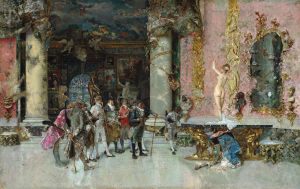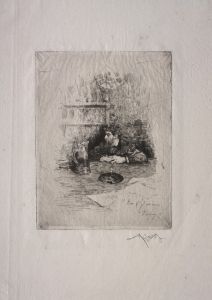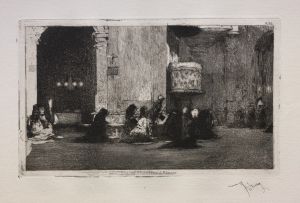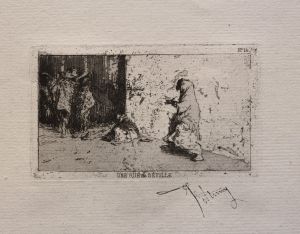
Cecilia de Madrazo Playing the Piano
A hand-painted replica of Mariano Fortuny Marsal’s masterpiece Cecilia de Madrazo Playing the Piano, meticulously crafted by professional artists to capture the true essence of the original. Each piece is created with museum-quality canvas and rare mineral pigments, carefully painted by experienced artists with delicate brushstrokes and rich, layered colors to perfectly recreate the texture of the original artwork. Unlike machine-printed reproductions, this hand-painted version brings the painting to life, infused with the artist’s emotions and skill in every stroke. Whether for personal collection or home decoration, it instantly elevates the artistic atmosphere of any space.
Cecilia de Madrazo Playing the Piano is a painting by the renowned Spanish artist Mariano Fortuny Marsal, also known as Marià Fortuny. Fortuny was a prominent 19th-century painter, recognized for his detailed and vibrant works that often depicted historical and genre scenes. He was born in Reus, Catalonia, in 1838 and became one of the most influential Spanish painters of his time, contributing significantly to the Romantic and Orientalist movements.
The painting features Cecilia de Madrazo, who was Fortuny's wife. Cecilia belonged to the illustrious Madrazo family, which was well-known in the art world. Her father, Federico de Madrazo, was a distinguished painter and director of the Prado Museum in Madrid. The Madrazo family had a significant impact on Spanish art, and Cecilia herself was an integral part of this artistic lineage.
In this artwork, Cecilia is depicted playing the piano, an activity that suggests her cultural refinement and the artistic environment in which she lived. The painting captures a moment of intimate domestic life, reflecting the 19th-century interest in portraying personal and familial scenes. Fortuny's attention to detail is evident in the rendering of the piano, Cecilia's attire, and the surrounding interior, showcasing his skill in capturing textures and light.
Fortuny's style is characterized by his use of vivid colors and precise brushwork, which are evident in this painting. His ability to convey the subtleties of light and shadow adds depth and realism to the scene. The composition is carefully balanced, drawing the viewer's attention to Cecilia and her engagement with the music, while also providing a glimpse into the setting that frames her.
The painting not only highlights Fortuny's technical prowess but also offers insight into the cultural milieu of the time. It reflects the importance of music and art in the lives of the European bourgeoisie during the 19th century. The presence of the piano, a symbol of cultural sophistication, underscores the role of music as a vital component of social and domestic life.
Mariano Fortuny's works, including Cecilia de Madrazo Playing the Piano, are celebrated for their beauty and historical significance. They provide a window into the artistic and social dynamics of the period, capturing moments of everyday life with elegance and precision. Fortuny's legacy continues to be appreciated in art history, and his paintings are held in high regard by collectors and institutions worldwide.
Cecilia de Madrazo Playing the Piano remains an exemplary piece within Fortuny's oeuvre, demonstrating his ability to blend personal narrative with broader cultural themes. The painting is a testament to his artistic vision and his capacity to immortalize the intimate moments of life through his art.








![La Donna Della Finestra [The Lady of Pity]](/imgs/236107/s/dante-gabriel-rossetti-la-donna-della-finestra-the-lady-of-pity-5b3f0a45.jpg)









